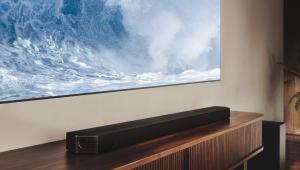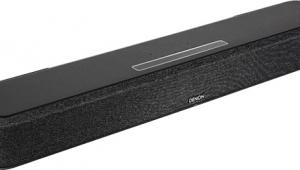Vizio S4251w-B4 Soundbar System Page 2
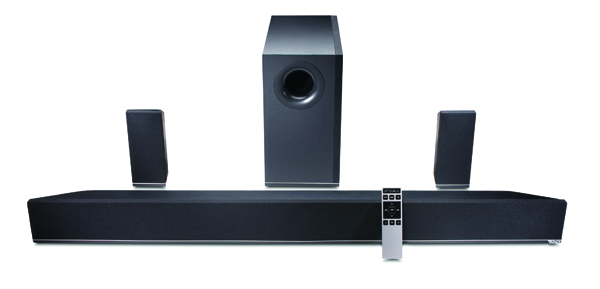
Expect the Unexpected
At this price, I expect tonal unevenness, gross coloration and an uncomfortable trade-off between mushy articulation and listening fatigue. What the Vizio provided was a pragmatic tonal balance that worked well for movies, though not so well for music. Coloration was inescapable but more minimal than expected. Listening fatigue was a moving target. It was more noticeable in music than in movies, but that probably stemmed from differing choices in listening modes. I began with all controls at their midpoints and didn’t change them unless there was good reason. TruVolume-on was my default setting for movies, though I did experiment; and I mostly kept it off for music. In my one quick test of the night mode, it did tamp down bass, as advertised.
The Aggression Scale, with a ninja-like mute kid facing down murderous thugs, came with a Dolby TrueHD soundtrack, from which the disc player extracted the Dolby Digital core for the soundbar’s surround processor. Not bad! was my first reaction. TruVolume did an exemplary job of clarifying voices and keeping other soundtrack elements in proper—well, let’s say listenable—balance. Bass effects were reasonably proportional and unexaggerated, possibly because I had the sub 3 feet from the wall and nowhere near a corner, avoiding boundary effects. While there was enough bass coloration to distinguish the sub from the soundbar at their crossover point, it was more a matter of tonal quality than tonal balance. High-frequency extension and air were neither present nor expected—those are not things you get in a $330 soundbar. Surround effects were adequate, though there was one odd moment, early in this initial demo, when a noticeable echo developed between the soundbar and the sub. I skipped disc chapters into subsequent scenes to see if the problem affected them. It didn’t; and when I skipped back, the problem didn’t recur. It may have been a temporary pairing glitch.
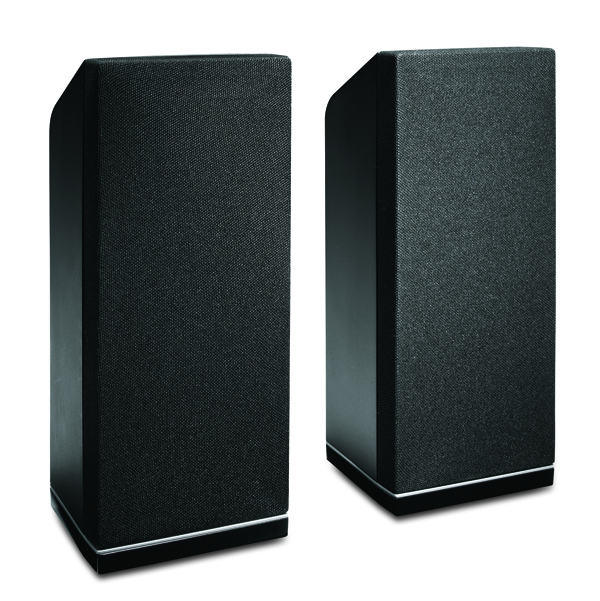
The Imposter , in Dolby Digital, is a dramatized documentary about a lost boy who returns to his family under mysterious circumstances. Voiceovers dominated the soundtrack, giving me a chance to contemplate TruVolume’s effect on dryly recorded voices. It deepened them, giving the sub a larger role, and also had a way of reducing obvious vocal coloration in the soundbar. I concluded that if I lived with this product, I’d probably leave TruVolume on all the time. It suited all movies and, as I later discovered, didn’t do much harm to music. With an entry-level product like this, purism gives way to whatever works.
Alex Cross, in DTS-HD Master Audio and playing the core DTS track, was the most dynamically challenging movie soundtrack I tried. I made a sustained attempt to go without DTS TruVolume, but booming effects eventually persuaded me to switch it back on. TruVolume also shored up surround levels and connected the dots in the soundfield. I’m guessing this product was voiced and optimized for TruVolume, which may explain why I liked it less when I turned off the volume leveler.
I should note in passing that I watched a week’s worth of newscasts and an episode of Saturday Night Live through the cable box, and the Vizio system did a fine job of juggling voices, pop music, and SUV ads from the analog stereo input it received.
Expect the Expected
Most of the music demos took advantage of the Bluetooth connection between the soundbar and my iPod touch.
The music demos were less uniformly acceptable, although the system did sound fine with Beyond Standard, a piano-based album by the jazz prodigy Hiromi and her band Sonicbloom, ripped to MP3. While the soundbar’s soundstage was limited to its 42-inch width, there was no trace of the hole-in-the-middle effect, and I was still able to discern both the guitar’s position at far left and the center spread of the bandleader’s piano. The piano’s lower keys revealed the sub’s tubby quality, though not mercilessly. I briefly experimented with DTS CircleSurround by switching to surround mode, but it pulled the soundstage out of shape in such a patently artificial way that I turned it off with relief. TruVolume, on the other hand, made a positive difference. While it tampered with the dynamics of a wonderful recording, it also made the soundstage more coherent.
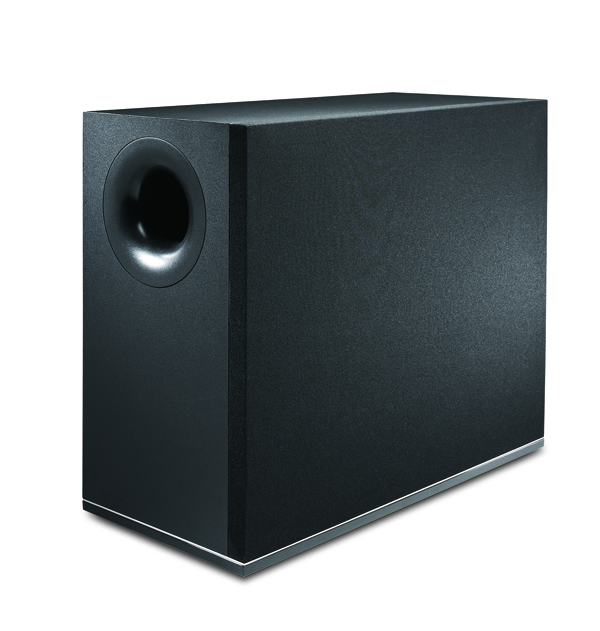
You might not regard the Ramones’ Rocket to Russia as audiophile material, and even less so in MP3, but its immaculately crafted metal textures offer a chance to listen on a feeling level. If I play it loud and feel good about it, an audio system is doing its job. If not, then not. Here the soundbar and sub were not able to transcend their price tag. The only way to make the system tolerable at a high volume was to do radical surgery with the treble control—turning it all the way down. The sub, as expected, suggested only a trace of Tommy Ramone’s mighty wallop, and turning up the sub level brought the sub’s bass coloration into higher relief.
Beethoven’s fourth and fifth piano concertos came on a CD by Rudolf Serkin with the Philadelphia Orchestra (Ormandy conducting) and the New York Philharmonic (Bernstein conducting). While the fifth in particular is recorded hot, the soundbar made it hotter, with the piano turning clattery and the string sound unpleasantly astringent. TruVolume and the radical treble cut made the fourth more listenable, but the fifth was a goner.
When I mentioned to Vizio’s publicist that I found the soundbar better for movies than for music, he responded on the company’s behalf: “Music is actually the primary vehicle used to voice the soundbars, and Vizio strives to strike a balance so that dialogue is prominent, as the soundbars will be used for lots of TV content. Compared to an audiophile system (with a gently sloping/tapering mid- to high-frequency section), our soundbars will be vocally forward and even ‘bright,’ but a lot will depend on other factors such as where the sub is placed and reflective surfaces in the listening environment. In our extensive testing we are happy with the voicing of the soundbars across movies as well as many genres of music.”

Returning to the definition of home theater with which we began: Do the Vizio S4251W-B4 soundbar, sub, and satellites form a home theater system? They do offer the requisite 5.1 channels, surround processing, the significant enhancement of DTS TruVolume, and the advantage of a wireless connections for the sub/surround signal transfer and for easy playback of mobile devices. But do they—in common with the best home theater systems—suspend disbelief and launch you into a cinematic story or a musical narrative?
Yes to the first: This system does far more for movies than I’d have expected in a $330 product. But its limits are more apparent with music. In fairness, however, while some soundbars are more adept at music than this one, they cost a lot more. And Vizio’s target customer here—the home theater newbie on a budget or the enthusiast looking for an inexpensive and acceptable TV audio solution for a bedroom or basement—may place less emphasis on music reproduction. And in this time of holiday, it’s affordability makes a good case for giving the gift of home theater. If any of these situations apply for you, by all means, have at it.
Audio editor Mark Fleischmann is also the author of the annually updated book Practical Home Theater (quietriverpress.com).




